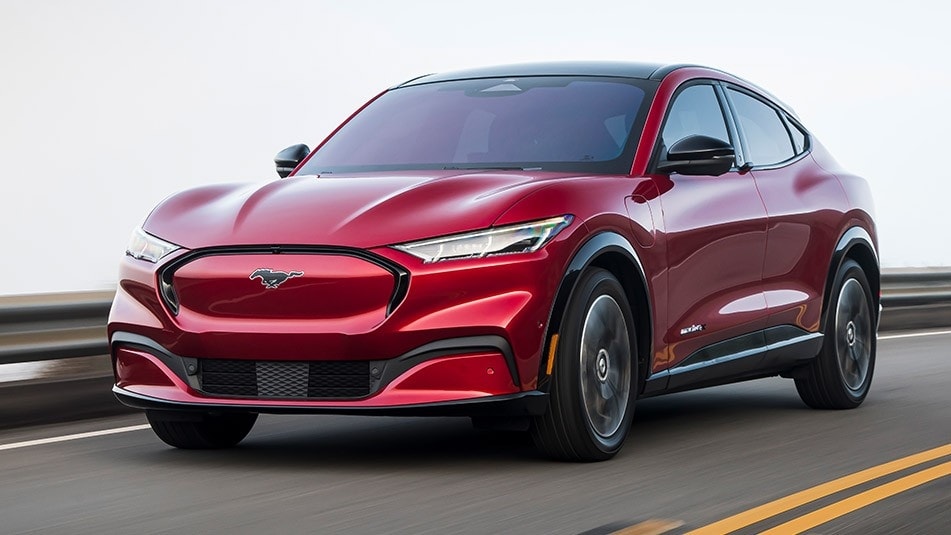
Ford Mustang Mach-E
Credit: Ford
Findings Demonstrate Importance of Equity-Driven Action
September 15, 2024 - SACRAMENTO – Californians are breathing far less pollution from vehicles than they were 25 years ago. Exposure to fine particulate matter (PM2.5) from cars, trucks and other vehicles has dropped by 65%, according to a new study by the California Environmental Protection Agency’s (CalEPA’s) Office of Environmental Health Hazard Assessment (OEHHA); University of California, Berkeley (UC Berkeley); and University of Washington. Particulate Matter 2.5 is a type of pollution comprising very small particles in the air that are 2.5 micrometers or less in diameter.
“Cleaner vehicles benefit the climate and improve the health of all Californians. This paper highlights that prioritizing actions in disproportionately impacted communities can help us deliver a triple win for California: better climate, better health, and greater equity,” said Dave Edwards, acting director of OEHHA.
The research team found that communities of color and low-income communities have seen the biggest improvements, but disparities remain. “We found that the biggest absolute reductions in air pollution over the past two decades happened in Black, Latino, and Asian American communities,” said study senior author Joshua Apte, an associate professor of civil and environmental engineering at UC Berkeley, “but they are still exposed at higher rates than white Californians—a relative gap that remained pretty much constant.”
The study examined how changes in vehicle emissions from 2000 to 2019 affected Californians’ exposure to PM2.5, which accounts for the greatest health impacts attributable to air pollution.
On average, cars and other light-duty vehicles caused more PM2.5 exposure than larger vehicles, such as trucks and buses. The elevated levels of PM2.5 faced by communities of color are also driven largely by emissions from smaller vehicles. This is because light-duty vehicles like cars accounted for the largest share of emissions that cause PM2.5.
However, there was significant variation by region. The study found that most vehicular PM2.5 exposure came from light-duty vehicles in the San Francisco Bay Area and the Los Angeles Area. But trucks, buses, and other heavy and medium-duty vehicles were responsible for most vehicular PM2.5 exposure in the Central Valley.
This research highlights the need for approaches that prioritize communities most impacted by air pollution exposure. California is leading with community-driven solutions:
-
AB 617 Community Air Protection Program, which ensures local residents are shaping solutions to specific issues that their communities face.
-
Advanced Clean Cars II and Advanced Clean Trucks regulations are advancing a zero-emissions future by mandating increased sales of zero-emissions vehicles, including incentives for automakers to make them more accessible to lower income communities.
-
The Advanced Clean Fleets regulation establishes zero-emission purchase requirements from fleets well-suited to move to zero-emissions, such as drayage, that operate in pollution-heavy areas near warehouses, railyards, ports, and/or busy highways.
-
Clean Cars 4 All is an incentive program designed to help lower-income Californians replace their old, higher-polluting vehicles with new or used, low- or zero-emission vehicles, and the state is expanding its focus on low-income residents.
To conduct the study, the research team developed a new open-source tool called ECHO-AIR using an existing air pollution model called InMAP and CARB’s best estimates of on-road vehicle emissions from the EMissions FACtor regulatory model. “The benefit of using ECHO-AIR is that we can isolate just the impact of California’s suite of mobile-source emissions,” said Libby Koolik, lead author of the study, “This makes it an important tool for analyzing air pollution exposures and informing measures that protect the health of those most impacted.”
The study is part of OEHHA’s ongoing efforts to assess the effects of California’s climate actions on communities experiencing poverty and pollution to inform equitable climate solutions. In addition to Apte and Koolik, study co-authors included Julian Marshall at University of Washington, Amy Budahn (CARB, formerly OEHHA), and Laurel Plummer and Álvaro Alvarado of OEHHA. Funding was provided by OEHHA.
OEHHA’s mission is to protect and enhance the health of Californians and our state’s environment through scientific evaluations that inform, support, and guide regulatory and other actions.
Source: OEHHA








